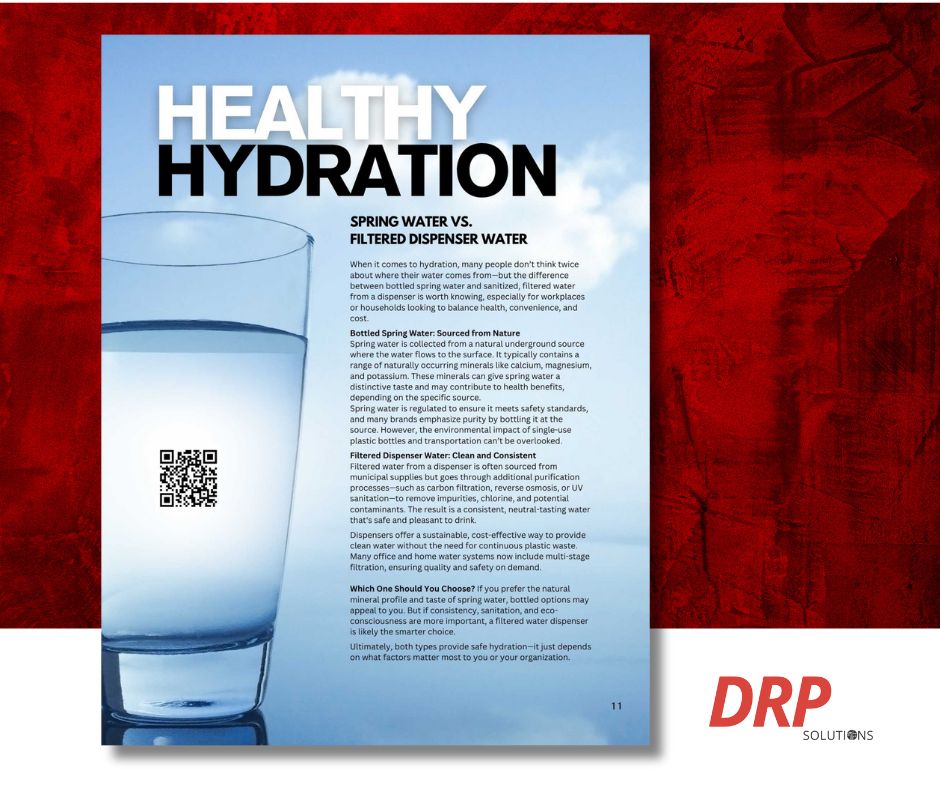When it comes to hydration, many people don’t think twice about where their water comes from—but the difference between bottled spring water and sanitized, filtered water from a dispenser is worth knowing, especially for workplaces or households looking to balance health, convenience, and cost.
Bottled Spring Water: Sourced from Nature
Spring water is collected from a natural underground source where the water flows to the surface. It typically contains a range of naturally occurring minerals like calcium, magnesium, and potassium. These minerals can give spring water a distinctive taste and may contribute to health benefits, depending on the specific source.
Spring water is regulated to ensure it meets safety standards, and many brands emphasize purity by bottling it at the source. However, the environmental impact of single-use plastic bottles and transportation can’t be overlooked.
Filtered Dispenser Water: Clean and Consistent
Filtered water from a dispenser is often sourced from municipal supplies but goes through additional purification processes—such as carbon filtration, reverse osmosis, or UV sanitation—to remove impurities, chlorine, and potential contaminants. The result is a consistent, neutral-tasting water that’s safe and pleasant to drink.
Dispensers offer a sustainable, cost-effective way to provide clean water without the need for continuous plastic waste. Many office and home water systems now include multi-stage filtration, ensuring quality and safety on demand.
Which One Should You Choose? If you prefer the natural mineral profile and taste of spring water, bottled options may appeal to you. But if consistency, sanitation, and eco-consciousness are more important, a filtered water dispenser is likely the smarter choice.
Ultimately, both types provide safe hydration—it just depends on what factors matter most to you or your organization.

